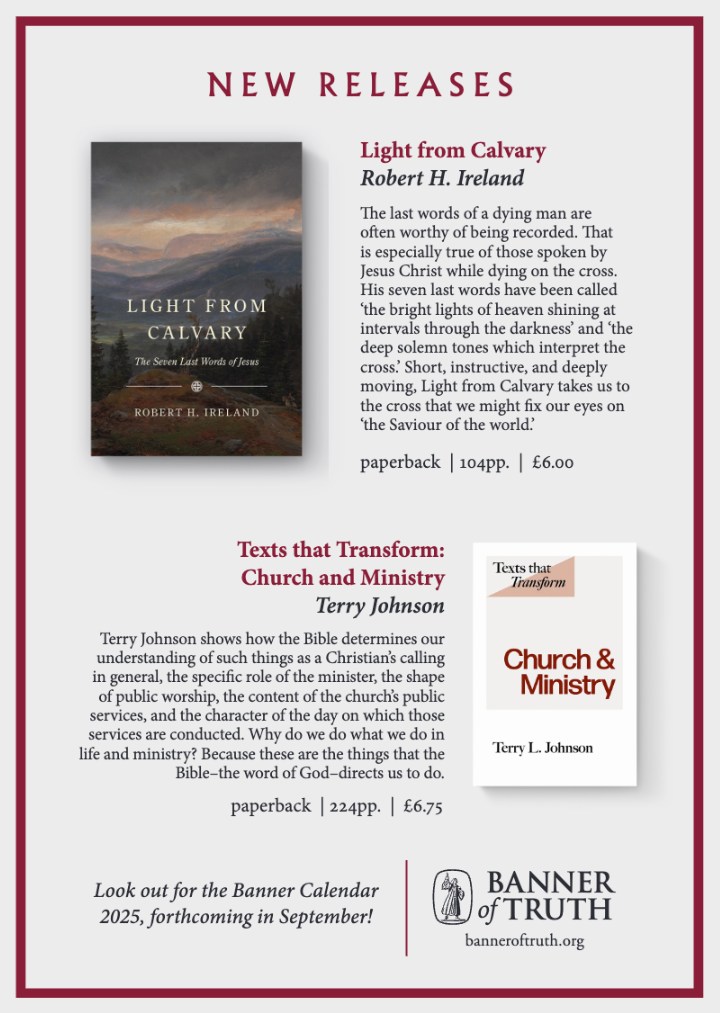Preaching to postmoderns
It is easy to think that ours is a unique period in history. But when Solomon observed that ‘there is nothing new under the sun’ (Ecclesiastes 1:9) he wasn’t referring to Sat Navs or particle accelerators, but reminding us that history often repeats itself.
This repetition is seen in the re-emergence of philosophical outlooks that characterised past eras, including postmodernism. Today’s postmoderns are saturated with subjectivism and relativism, just as some of Paul’s hearers were at Mars Hill in Athens (Acts 17).
When a preacher’s audience is obviously not ‘on the same page’ as him or even reading from the same book, where and how does he begin to preach the gospel in a meaningful way? Let us learn from Paul.
Market place
Paul’s Jewish credentials were impressive. He was tutored at the feet of Gamaliel and was a Pharisee among Pharisees. But as a Christian preacher he was determined to reach the majority Greek community. Since he wasn’t able to access them in the synagogues, he went to where they were – in the market place of Athens.
Athens was the home of the Greek philosophers: men such as Socrates, Philo, Aristotle, Epicurus and Zeno. These teachers and their students interacted through dialogue.
Athens was also where the cynics and sceptics resided. Paul had his work cut out! However, he well knew how to approach those espousing peculiar and unbiblical world views that conflicted with the gospel message.
Today, seeker services aim at reaching people from a variety of contemporary subcultures, but they often end up diluting the true gospel. On the other hand, it is possible for a preacher to preach the truth yet fail to communicate it well because he has little appreciation of where his audience is coming from. Paul sets us a pattern of being both culturally sensitive and yet faithful to the gospel.
Consider two groups that Paul encountered – the Epicureans and the Stoics.
The Epicureans could be described as moderate hedonists, in many respects similar to today’s secular humanists. They sought pleasure and liberation from pain. The gods were too remote to have a significant impact on or interest in their lives, so this life was all there was and divine judgement did not enter into their vocabulary.
Communication
The Stoics could be compared with today’s New Agers. They held the view that there was a life force inside all people and things, and they were therefore constrained by moral duty towards other humans and to the material world.
On hearing Paul’s message, the Epicureans mocked, demanding, ‘What is this babbler trying to say?’, while the Stoics were utterly confused. When Paul preached ‘Jesus’ and the ‘Resurrection’ they thought he was referring to a pairing of deities such as Isis/Osiris or Venus/Adonis.
Although the confusion of today’s gospel hearers may lie in different directions from these two groups, we should realise that preachers today still face similar challenges to Paul at the level of communication. Words can mean very different things to those unfamiliar with Scripture.
For example, the simple phrase ‘Stephen was stoned’ may mean something very different to a biblically illiterate generation! If we are insensitive to culture, our audience may entirely miss the point.
Nor did Paul commence his work by stating to his hearers, ‘You’re wrong! I’m right!’ Instead, he addressed them where they were. The fact that they had an altar to the unknown God was evidence enough that they were searching for God and hadn’t found him!
The Epicureans thought that even if the unknown God did exist, ‘it’ was too far off to influence their lives. The Stoics didn’t believe in a personal deity.
Paul began his interaction with the Stoics by explaining God’s creation. He introduced them to the God of creation by expounding Scripture in a manner they could comprehend, without explicitly quoting chapter and verse of the biblical text.
Creation
In Acts 17:24 he explained: ‘God does not dwell in temples made with hands’ (cf. 1 Kings 8:27; Isaiah 66:1). As in Romans 1, his underlying message was that the invisible attributes of God are clearly seen in creation. He drew on Isaiah 42:5, digesting down its teaching, to make the distinction that Yahweh, not Zeus, is the source of life.
Secondly, he dealt with sensitive but highly relevant racial issues. In Acts 17:26, he explained that because humans were all ‘from one blood’, the current sharp racial distinctions between Jews and Gentiles, Greeks and Barbarians were irrelevant in the face of the gospel of grace.
In a nutshell, he quickly created a bridge with his cosmopolitan Athenian audience and avoided coming across as overbearing or arrogant.
Thirdly, and most importantly, his message was comprehensible and relevant. In quoting one of their own, the Stoic poet Aratus, he moved from creation to secular poetry. And by no means was his use of secular authors a unique occurrence; he cited Menander in 1 Corinthians 15:33, ‘Evil company corrupts good habits’, and Epimenides in Titus 1:12, ‘Cretans are always liars, evil beasts, lazy gluttons’. By using such authors to make his point, Paul was not, of course, advocating everything they said or believed.
So, does this mean that preachers should start quoting Kipling or Blake next Sunday morning?
Well, we should note that Paul employed such illustration sparingly, although to great effect, and used it as a springboard to explain the good news or important moral truths. If we follow his example, sports, music and the arts may indeed provide talking points to open up lines of argument, for example about the need to relate to God, but they should only be used very strategically.
Faithfulness
Some would say that, judging by his results at Athens, Paul’s approach wasn’t successful. Are they correct in that assertion?
Acts 17:34 confirms that some men believed and also a woman. One of the new believers was an Aeropagite. Paul’s preaching had, therefore, successfully transcended the deep cultural, ethnic and gender barriers of his day.
Others might argue that every part of every sermon should be presented in an expository manner, rooted in readings from the biblical text. But Paul managed pretty well in Athens and Lystra without doing that!
Nonetheless, we should also remember that his usual practice was to preach in the synagogues, persuading his Jewish listeners from the law and the prophets and using the Old Testament scriptures to prove that Jesus was the Messiah (Acts 9:22; 28:23).
The example that Paul leaves us with in Acts 17 is his masterly communication of the gospel to people from entirely different backgrounds to those who were ‘churched’. He preached so that they understood and did so without watering the gospel down.
He refused to mince his words and he called on the Athenians to repent in the light of the fact that one day God would judge the world by Jesus Christ, whom he had raised from the dead.
When we attempt to reach unbelievers, it is important to recognise that our audiences are often not homogenous. Ideally, we should know something of the individuals we are trying to engage with, if we are to explain the gospel meaningfully. And whoever we engage with, it is vital to preach Christ clearly and faithfully.
Jon Taylor






